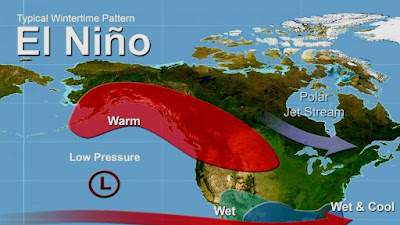To Plant or not to Plant
My daughter is eager to get outdoors and plant vegetable seeds for her summer garden. She's excited and she should be. Day time temperatures have been in the upper'60s and '70s and for the most part, the evenings and nights have been mild.

We are experiencing another El-Nino which probably accounts for the early spring but don't be fooled.

With an average high of 60 and an average low of 39 in her area planting outdoors is risky business. If the night temperatures take a sudden dip or if a cold front moves through she could lose everything in one night.
As I covered in a post about a year ago. If you garden in pots AND have the time to be diligent you can get the jump on the season by putting your plants out in the sun around noon on warm days as long as you remember to bring them in when it gets cold.
My daughter lives in zone 6a, in the US. I have a good friend who lives in zone 6b. My daughter plants seeds but my friend has starter plants that are about 3 weeks old. Those plants are plants, not seedlings and therefore heartier so they can take a little more cold. Her tomato plants are already in the ground but she keeps a close eye on them and will be able to protect them in the event of a cold snap. The advantage of starting early is that she will have an opportunity to plant twice in one season.

Her tomato plants are already in the ground but she keeps a close eye on them and will be able to protect them in the event of a cold snap. The advantage of starting early is that she will have an opportunity to plant twice in one season.
Covering your plants will add a few degrees of warmth even if they are in the ground but don't expect too much. If the temperatures fall too far the coverings won't save your plants. I covered these pots with leaf bags.
Leave bags cut open will also provide some protection for larger areas.
My final suggestion to help protect your young plants in early spring is a frost cloth. (See photo above) They run about twenty bucks depending on the size and will provide a larger area of protection. I usually use mine in the fall to save the last bit of harvest from dying.
Don't forget my Earth Day Seed Giveaway is coming soon. Subscribe to my Youtube channel to become eligible to win.
My daughter is eager to get outdoors and plant vegetable seeds for her summer garden. She's excited and she should be. Day time temperatures have been in the upper'60s and '70s and for the most part, the evenings and nights have been mild.

We are experiencing another El-Nino which probably accounts for the early spring but don't be fooled.

With an average high of 60 and an average low of 39 in her area planting outdoors is risky business. If the night temperatures take a sudden dip or if a cold front moves through she could lose everything in one night.
As I covered in a post about a year ago. If you garden in pots AND have the time to be diligent you can get the jump on the season by putting your plants out in the sun around noon on warm days as long as you remember to bring them in when it gets cold.
My daughter lives in zone 6a, in the US. I have a good friend who lives in zone 6b. My daughter plants seeds but my friend has starter plants that are about 3 weeks old. Those plants are plants, not seedlings and therefore heartier so they can take a little more cold. Her tomato plants are already in the ground but she keeps a close eye on them and will be able to protect them in the event of a cold snap. The advantage of starting early is that she will have an opportunity to plant twice in one season.

Her tomato plants are already in the ground but she keeps a close eye on them and will be able to protect them in the event of a cold snap. The advantage of starting early is that she will have an opportunity to plant twice in one season.
Covering your plants will add a few degrees of warmth even if they are in the ground but don't expect too much. If the temperatures fall too far the coverings won't save your plants. I covered these pots with leaf bags.
Leave bags cut open will also provide some protection for larger areas.
My final suggestion to help protect your young plants in early spring is a frost cloth. (See photo above) They run about twenty bucks depending on the size and will provide a larger area of protection. I usually use mine in the fall to save the last bit of harvest from dying.
Don't forget my Earth Day Seed Giveaway is coming soon. Subscribe to my Youtube channel to become eligible to win.





Comments
Post a Comment